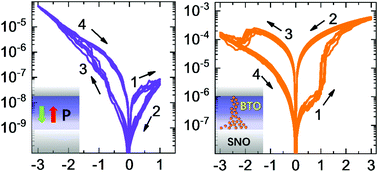Reversible transition of filamentary and ferroelectric resistive switching in BaTiO3/SmNiO3 heterostructures
Abstract
Recently, resistive switching (RS) phenomena have been widely studied for their promising properties, which are favorable to be implemented in the next-generation information technology. However, devices with multiple resistance states originating from different mechanisms, which are desirable for applications, have seldom been reported. In the current work, a coexistence of clockwise and counterclockwise RS behaviors has been found in BaTiO3/SmNiO3 (BTO/SNO) heterostructures, which have been fabricated by pulsed laser deposition. The mechanisms for the two RS behaviors were demonstrated as barrier profile modulations due to ferroelectric polarization reversal and formation/rupture of the conductive filament due to the migration of VO, respectively. Tri-nonvolatile resistance states have been clearly observed, and a reversible transition between them has been confirmed. Furthermore, preliminary simulations of synapse characteristics, paired-pulse facilitation and paired-pulse depression were realized by only varying the electric stimulation voltage amplitude and not the polarity. Our findings reported here shed new light on designing next-generation novel devices.



 Please wait while we load your content...
Please wait while we load your content...